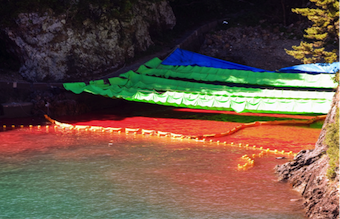A place of sadness, injustice, and an utter lack of compassion
Taiji is a place of genuine horror. What goes on there, from Sept 1st to Mar 1st of every year, is beyond anything we can conceptualize as part of the routine fabric of life in a modern industrialized nation. It’s a sickness that somehow got a firm foothold in an otherwise peaceful nation. So what makes it possible?
For the most part, the operators of the Taiji dolphin drive-hunts have successfully managed to keep the whole affair under the radar. As global citizens, there are a great many things competing for our attention, and most of us are too busy to notice. But it’s worse than that. When issues like this one somehow manage to focus our awareness for an instant, we aren’t able to really wrap our heads around it. Not with something this awful actually taking place in a country from which we buy so many of our cars, our cameras and so many other good things we’ve come to expect. The facts just don’t seem to fit the whole context somehow.
So we move on because none of it literally makes any sense.
So what’s really going on in the cove in Taiji? Let’s put aside statistics for a moment, and instead try to build a mental picture of what this looks like. Here are some of the day-to-day details that observers from LIA or Dolphin Project have to somehow learn to cope with emotionally and intellectually. See if any of this resonates.
A worker holds a steel implement in one hand, and the fin of a dolphin in the other, while standing in water that’s turned red with blood – and he is laughing as he works. Cove monitors see this routinely. The man considers himself a ‘fisherman’ so perhaps he sees himself as doing nothing more than processing fish for your dinner. But can anyone believe for a second that this man is incapable of understanding that a dolphin is not a fish?
Swimming off the coast a pod of dolphins is met with a wall of sound from workers on the ‘banger boats’ beating on long metal poles they’ve inserted into the water. The pod is pursued by high speed boats, often for several hours and all the while urging their young to try to keep up. They’re usually exhausted by the time they’re pushed into the cove. Some will have already suffered from cardiac arrest.
A shallow section of the cove is netted off to trap them. The dolphins are by this point usually too tired to resist if they have to be wrestled into the enclosure by divers. They’ll spend the next few hours trying to understand what’s happening to them while the hunters determine whether they will live or die. At this stage their protective instincts towards one another are obvious to observers, but the futility of it is not known to them.
If selected for a life in captivity mothers and babies will be separated. Young females are often chosen, but the babies and juveniles are as well on some occasions. Usually, baby dolphins will either be left to die, or taken back out to the open ocean and released so that they won’t count against the quota. Without the protection of their mother and their pod, their chance of survival is virtually zero.
Those not selected for a lifetime of servitude in a marine park will typically be killed.
This is accomplished by stabbing through the neck with a metal rod. The dolphins’ cries can be heard by observers, and certainly by the other dolphins. Do the ones selected for captivity also hear what’s going on? I suspect that they do. Knowing this, and going on to a lifetime of stress and tedium in a tiny concrete tank, one couldn’t honestly say whether those allowed to live are the lucky ones.
The killing process used to take place out in the open, but now, with cameras rolling throughout the hunting season, the killing is hidden under tarps. The blood spilling out into the surrounding waters is hard to hide, so a common practice is to shove a wooden cork into the wound to try to stem the flow. This only intensifies and prolongs the dolphin’s suffering. The process is insanely cruel, and by Japan’s own laws it would not be permitted in any slaughterhouse if inflicted on pigs or cattle.
The justification for using what is effectively a sharp metal spike, driven into the neck just behind the blowhole, is that it will sever the spinal cord and bring about a quick death. We know this to be untrue, and many of us have seen the video footage taken before the killing was hidden under the tarps. Death comes slowly, and it’s both traumatic and heart wrenching to witness as the dolphin continues to thrash about in what is obvious agony for several minutes. Some have even been recorded still alive as their bodies are being transported to the butchers where they’ll be processed into food for human or animal consumption.
Still not convinced that Taiji is truly a place of horrors? For the last few years, there’s been discussion of creating a new aquatic theme park in Moriura Bay. Here, tourists would feed, paddleboard or swim with captive dolphins. The conversation has gotten macabre, with serious consideration given to crossbreeding between species to create unusual and exciting attractions. Rare specimens like albino dolphins have long been popular, and now one of the stated goals would be to create leucistic dolphins (having reduced skin pigmentation but normally colored eyes), as well as new hybrid species. Really sick stuff, all designed to achieve maximum profitability.
What fuels all this is the fact that there are still a good number of marine parks around the world who will pay handsomely. A bottlenose dolphin, the most sought after species, can earn the ‘fishermen’ as much as US$150K. A dead dolphin will fetch less than 1% of that, effectively nothing to suggest this part of the operation could ever be profitable without the live captures. So one has to wonder what the real motivation for the killing really is? Perhaps it’s that the dolphins are perceived as competitors for dwindling fish stocks, as many have suggested.
So how should we respond to this injustice?
The most immediate answer is to try to reach more people in Japan itself. The brutality of the killing cove is largely unreported in Japanese media. The hunts are still highly censored, though it seems to be more a matter of self-censorship to protect a local industry. I’ve seen little evidence that it’s a matter of deliberate national government policy, though I could be wrong about that. Given that Japan has a free press, a comprehensive explanation for this media silence is hard to gauge. One has to believe that the Japanese public would care about such brutality taking place in their nation, to the financial benefit of a very few. So isn’t there a story here?
For whatever reason, the media won’t even report on the levels of mercury and methyl mercury found in dolphin meat, sometimes significantly exceeding legal limits. This meat is sold in supermarkets, and routinely fed even to school children, so the motives behind this self-censorship by the media are mysterious. At the end of the day, this fact, as well as that of the ongoing carnage and brutality in Taiji harbor, remains unknown to most of the people. Dolphin advocates such as AFD, who are widely active in Japan, report that the majority of Japanese citizens remain unaware of the hunts.
Dolphins are often referred to as sentient, which of course they are, and we say things like “Please show compassion for these sentient beings”. But dolphins are much more than that. Sentient describes the ability to perceive and feel things. As such, all animals capable of feeling pain should be granted humane treatment by humans. But dolphins are intelligent on a plane that rivals our own, and their capacity to experience pain beyond simply the physical is much more akin to ours.
Swimming in the blood of your relatives as you can hear them being killed under the tarps. Trying vainly to protect one another while you await your turn. Being separated from a child. These are experiences which, to them, would feel much like the Nazi death camps did to us. I don’t make that comparison lightly. Dolphins are most emphatically not fish, as the Taiji hunters like to pretend, and would like us to do as well. They are highly sophisticated mammals with large, complex brains and extraordinary social intelligence. Perhaps a better word than ‘sentient’ would be ‘sapient’.
We need to reach the Japanese people en masse, and this horror needs to end. Our descendants may not think kindly of us that we let it go on this long.
For The Orca’s Voice,
Dani, Canadian Cetacean Alliance



Leave a Reply